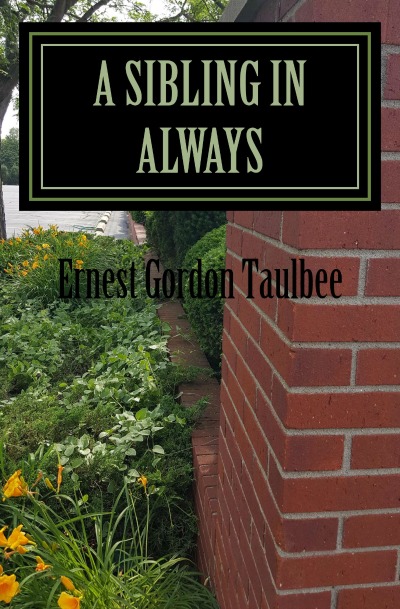Ernest Gordon Taulbee
|
Ernest Gordon Taulbee grew up in a small town in Eastern Kentucky called Salyersville. He received both a Bachelor's and a Master's degree from Eastern Kentucky University. Upon completing his MA he moved to Louisville -- where he has lived most of his adult life.
Love of reading and writing has been a theme in his life. Through the decade and a half since he finished his MA, Mr. Taulbee has worked a variety of jobs, from populating a cubicle in a large corporation to making and selling mead. Throughout his whole life, writing has remained his singular professional and artistic passion. |
A Sibling in Always
|
Literary Fiction
When a severely deformed corpse lands on his embalming table, skilled mortician, Horace Carver is forced to confront his apathy towards life and the dark secrets hidden within himself, his family, and his hometown of Always, Indiana. This engaging novel finds a depth that is often missing in many of today’s books. Laden with literary devices and allusions, including themes borrowed from ancient mythology, this book immerses itself into the broadened and modernizing Mid-Western culture of the late 1970’s to 2008, highlighting the prose with delicate harmonic overtones of the Near South. The prose has the classic sensibilities with the poetic nuances and timing. It also uses tightly metered poetry that often serves as the reader’s guide while experiencing the novel. |
How Many Summers We Have Left
|
Dark Experimental
Estill Salyer isn't a good person and he doesn't pretend to be. The novella follows him as he crosses the American Mid-West and South looking for victims. He is not a killer. He just likes to use people. Without redeeming qualities, he struggles to come to terms with the fate he has created for himself, as he and the rest of society attempt accept a new disease. This intentionally disjointed and experimental novella-in-stories abandons typical narration in favor of a disturbing story told by a vicious and amoral narrator. As the story breaks down, so does the narration; for example, the second part, “[Dry County],” develops most of its story in the language of Carnival workers. Little to no consideration is given to the reader; rather the reader is commanded to either submit to the story or abandon it – similar to the choice Estill Salyer gives his unknowing victim. The experimental nature of this novella is not only found in the story but in the use of numbers and metaphors. Though not dystopian or science fiction, there is a bleakness in the book that lends itself to both of those genres. |













